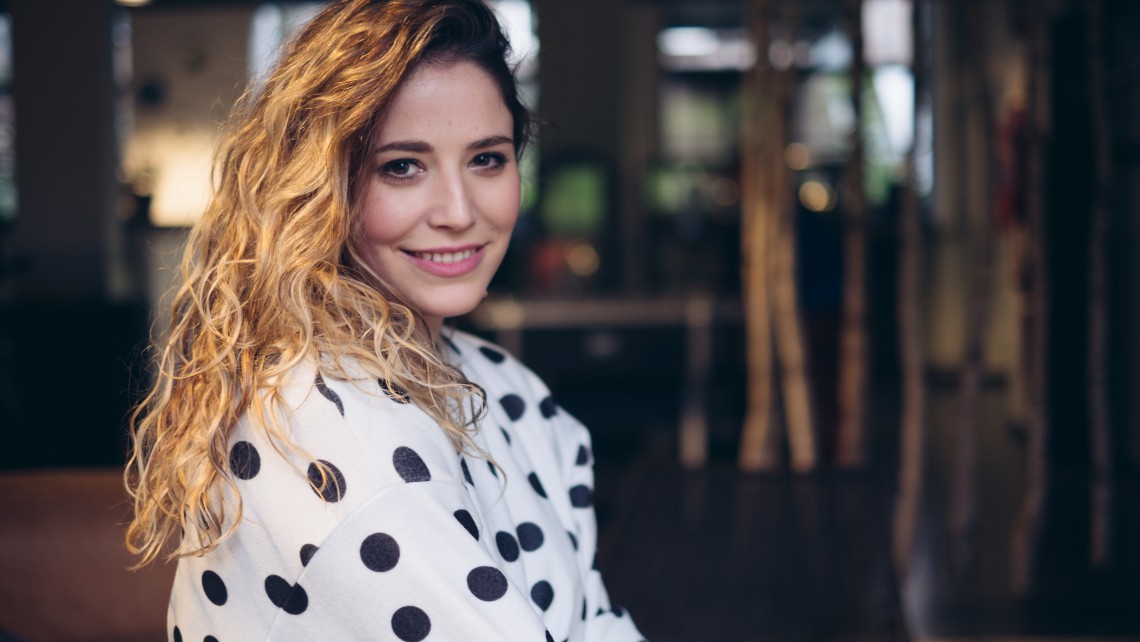Robot caregivers: friends or foes?
In countless areas of modern life, we are told, the robots are coming… and among the roles they may some day fill are those of “socially assistive” tools for the elderly, providing everything from social contact and cognitive support to reminders to take medication and alerting emergency services in case of a fall. But what do the older people in question think of these developments? Will robots create or destroy value for them and the family members and caregivers around them?

Martina Čaić, a PhD student in the Department of Marketing and Supply Chain Management, is working on helping find the answer. Her forthcoming paper in the Journal of Service Management, “Service robots: Value co-creation and co-destruction in elderly care networks”, co-authored with SBE colleagues Gaby Odekerken-Schröder and Dominik Mahr, presents some of her research findings.
Caregiver robots, she says, are an “interesting future service”, but one for which end-user feedback is essential, given the limitations of “what engineers and roboticists know and see. They try to be user-focused, but there’s a big gap between the perspectives of 30-year-old engineers and those of 80-year-old consumers”.
Intruder or enabler? Replacement or ally?
With funding from the European Union’s Horizon 2020 research and innovation programme under the Marie Skłodowska-Curie grant agreement, and working in conjunction with Zuyderland hospital in Limburg and Cáritas Coimbra hospital in Portugal, Čaić carried out participatory research with 20 older people, mostly in their eighties, about robot caregivers. The aim was “to find out how they thought it would change not only their lives, but also those of their caregivers, formal and informal – family, friends and professional carers. Would the robot be an intruder, or an enabler, ally and company? Will it be a replacement for the human contact they now have?”
Using sets of cards that allowed participants to show their existing networks and indicate where they thought the robots might fit in, she asked for their views on prototypes that are more than metal boxes, but less than fully humanoid (“they don’t have arms or legs, but do have eyes and facial expressions”). Čaić asked interviewees “whether they perceived it as a positive thing, and if not, why were they resistant? What I found is that they did indeed perceive it as creating value, but also likely to destroy some of the value that they currently have.”
Willing to help
Her elderly interviewees, she says, were keen to help. “I always remember one man who told me he loved it when I came to visit because he really liked to help researchers improve life for future generations. He didn’t think the robots would be ready in time to help him, but he wanted to help advance science,” Čaić says.
Did Dutch and Portuguese respondents’ views differ? Čaić says the differences had more to do with individuals’ attitude to technology. “Those who were very technology averse, and for example didn’t feel comfortable using tablets, saw the robot as a bigger tablet with more functionality and buttons they could press and that might make things go wrong.”
What surprised Čaić about her findings? “What is interesting – and I’m doing additional work to go deeper into that topic – is the idea of seeing the robot as a social entity”. While participants saw caregiver robots “as something that could perform its tasks and be efficient, they could not perceive it as someone they could have a conversation with or that could genuinely care for them. However, they did evaluate it through similar mechanisms that they would use to evaluate a human, so they thought about whether it was friendly, or ill-intentioned.”
She adds: “I think network consciousness could make or break their decision. They really cared about lifting the burden on family members. Even if they perceived the robot as being an intrusion into their privacy, or felt it would have some negative impact for them, they were open to accepting it because of their family.”
Implementation of study’s findings
Čaić says she was “very happy to receive the news” of the publication of her research, in what was “a long process – I started working on this paper in 2015”. Her partners at Zuyderland and Caritas Coimbra “have already had inputs into which functionalities would work better, and which functionalities need some improvement from the users’ perspective”.
How would she like to see her findings implemented?
“Once you have a finished product or a service, it’s very difficult to change things. Developers should start involving users from the very beginning, so it can be easier to meet their needs and desires. Things can be developed with the best intentions, but just don’t work for the elderly people, because the creators cannot put themselves in that mind-set. They need to understand users and train other people involved in their care. Where there is a resistance to such innovation, it comes not just from end users, but the network around them. The introduction strategy needs to be managed.”
In Čaić’s view, is there a danger that these robots will lead to job-losses among carers and loss of human interaction for the elderly?
“I would argue that this should not be the case. They are being proposed as augmentation for human caregivers. If robots can perform more mechanical jobs, the tedious and time-consuming tasks, then human caregivers will have more time to have effective relationships, to socialise with the elderly, and increase psychosocial benefits. I do see these developments as having this potential, not merely as ways to replace humans.”
Photo: © Michel Saive
Also read
-
Financial Times MiM Ranking 2025: Maastricht University SBE #1 in the Netherlands, Top 100 Worldwide
We are proud to share that Maastricht University’s School of Business and Economics (SBE) has been ranked among the top 100 business schools worldwide and #1 in the Netherlands by the Financial Times in the Masters in Management (MiM) Ranking 2025. This recognition highlights the quality, impact...

-
Riding the waves of change: From a summer vacation to a life that feels as good as it looks
For SBE alumna Victoria Gonsior, one spontaneous decision: trying surfing sparked a journey of self-discovery, leading her to redefine success, embrace joy, and build a career that aligns deeply with her values. From quiet beaches in Sierra Leone to coaching sessions rooted in purpose, Victoria...
-
SBE researchers involved in NWO research on the role of the pension sector in the sustainability transition
SBE professors Lisa Brüggen and Rob Bauer are part of a national, NWO-funded initiative exploring how Dutch pension funds can accelerate the transition to a sustainable society. The €750,000 project aims to align pension investments with participants’ sustainability preferences and practical legal...
